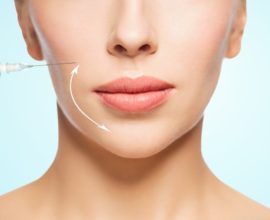Radiesse – What You Should Know About the Treatment
As you continue to age, you might notice that you develop an older and thinner look on certain parts of the body. If you want to restore lost volume to the face and hands, Radiesse might be a good option for you as it stimulates the production of collagen and helps to improve the appearance of wrinkles and folds around the mouth and nose as well as restore areas of volume loss in the face. In addition, it can restore the volume that has been lost on the back of the hands. If you are interested in learning more about this treatment, read on to learn what you need to know about Radiesse.
Radiesse – What is It?
 Radiesse is an injectable filler that provides a fuller and plumper appearance to areas of the skin that have wrinkles or lack volume. It is often used on the face, and it stimulates the collagen that naturally occurs under the skin.
Radiesse is an injectable filler that provides a fuller and plumper appearance to areas of the skin that have wrinkles or lack volume. It is often used on the face, and it stimulates the collagen that naturally occurs under the skin.
When it is used on the face, Radiesse is most often placed in the skin that surrounds the mouth and nose and also the wrinkled areas in the hands. The Radiesse filler is placed in the body using a tiny needle and it is a popular choice as the ingredients are not toxic and they are compatible with the natural tissues of the body.
Radiesse – Who Does it Help?
The ideal candidates for Radiesse are adults who are between the ages of thirty-five and sixty and have wrinkles and folds located around their nose and mouth. In addition, an ideal candidate is someone who wants the skin on their hands to have a look that is plumper and full of volume.
Radiesse – How Does it Work in the Body?
Radiesse is composed of calcium hydroxyapatite (CaHA) gel microspheres that are injected into the body. The injectable gel provides a greater amount of volume in the treated area and also stimulates collagen that naturally occurs in the body.
The first step in the process is when the doctor determines where you need to have an injection. Antiseptic is applied to the sites where the injections will be made once the doctor determines the proper dosage to achieve your desired results.
The procedure can take about fifteen minutes to complete, and the amount of time depends on the number of injections that are performed. There is no recovery time involved with the injections and you can go home immediately after the treatment.
Radiesse – Risk and Side Effects Revealed
When it comes to having Radiesse injections, here are some of the risks and side effects that you should know about in advance:
- Itching
- Swelling
- Bruising
- Redness
- Pain at the injection site
- Lumps
- Temporary scabbing at the injection site
Radiesse – What Happens After the Procedure?
Once the injections are made in the body, you can expect to see an immediate improvement in the appearance of the skin. It can take about a week to see the final results of the procedure.
Keep in mind that the results from Radiesse are not permanent, which means you will need to have a repeat treatment in order to maintain the results. The final results can last up to two years so you might be able to wait that length of time before another treatment. Depending on your individual results, you might need to have some smaller injections to maintain the results between your major Radiesse treatments.
Any swelling and bruising should not be severe and these conditions will resolve on their own. You can also use over-the-counter pain medication if you feel any discomfort after receiving the injections.
You will be able to resume your normal routine immediately after the injections, but you need to be careful and avoid any type of strenuous activities or exercise for a period of time determined by your doctor. The skin might be sensitive to sunlight after the treatment so try to avoid direct sunlight for at least twenty-four hours after the injections or until the swelling and redness on the skin resolve on their own.
Radiesse – Talk to a Doctor
Before you undergo a Radiesse treatment, you will need to be examined by a doctor to make sure you are an ideal candidate for the procedure. The doctor will make sure you are not taking any medications, such as blood thinners, which can cause you to experience excessive bruising or bleeding where the injections are performed.
The doctor will also discuss alternative treatments that might provide better results for your specific needs. Some of the medical treatments that might be suggested by the doctor include collagen injections, Juvéderm, and fat fillers. Some of the other options the doctor might suggest are microdermabrasion, laser skin treatments, and a chemical peel.
No matter which treatment you decide to have, the doctor needs to be experienced in performing the treatment and also have the proper qualifications to provide the results you desire when it comes to the appearance of your face and hands.




